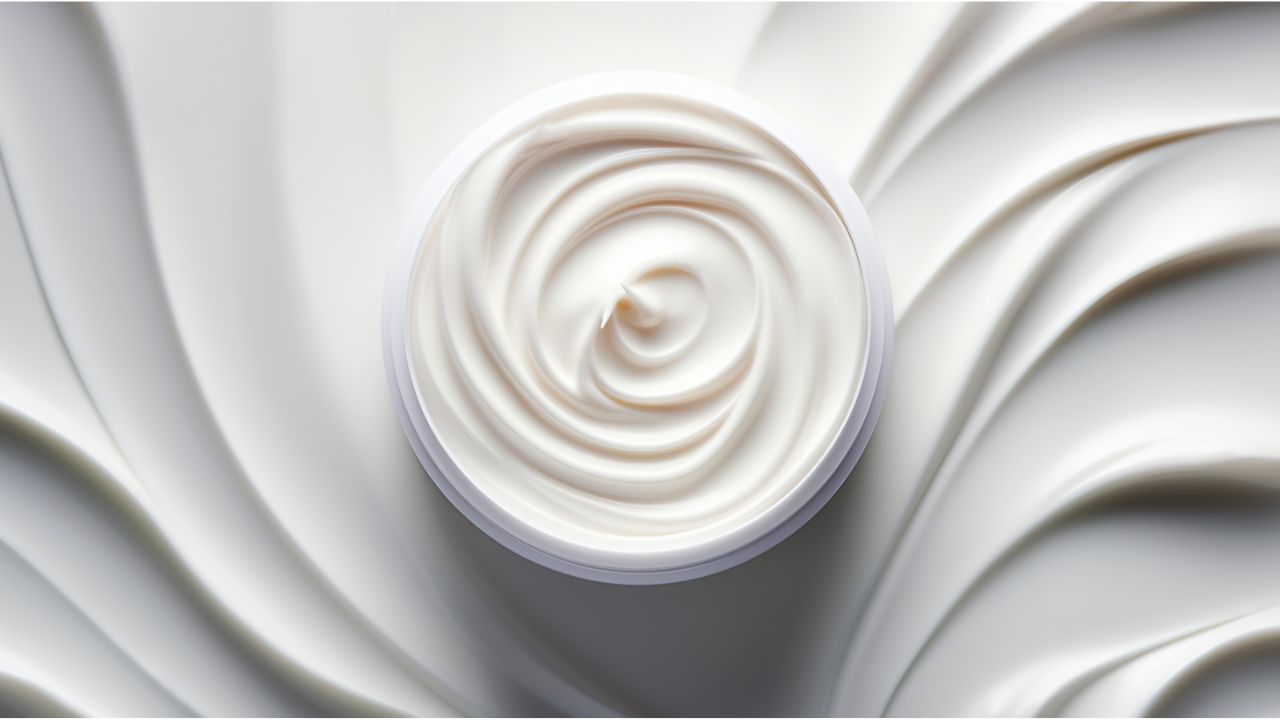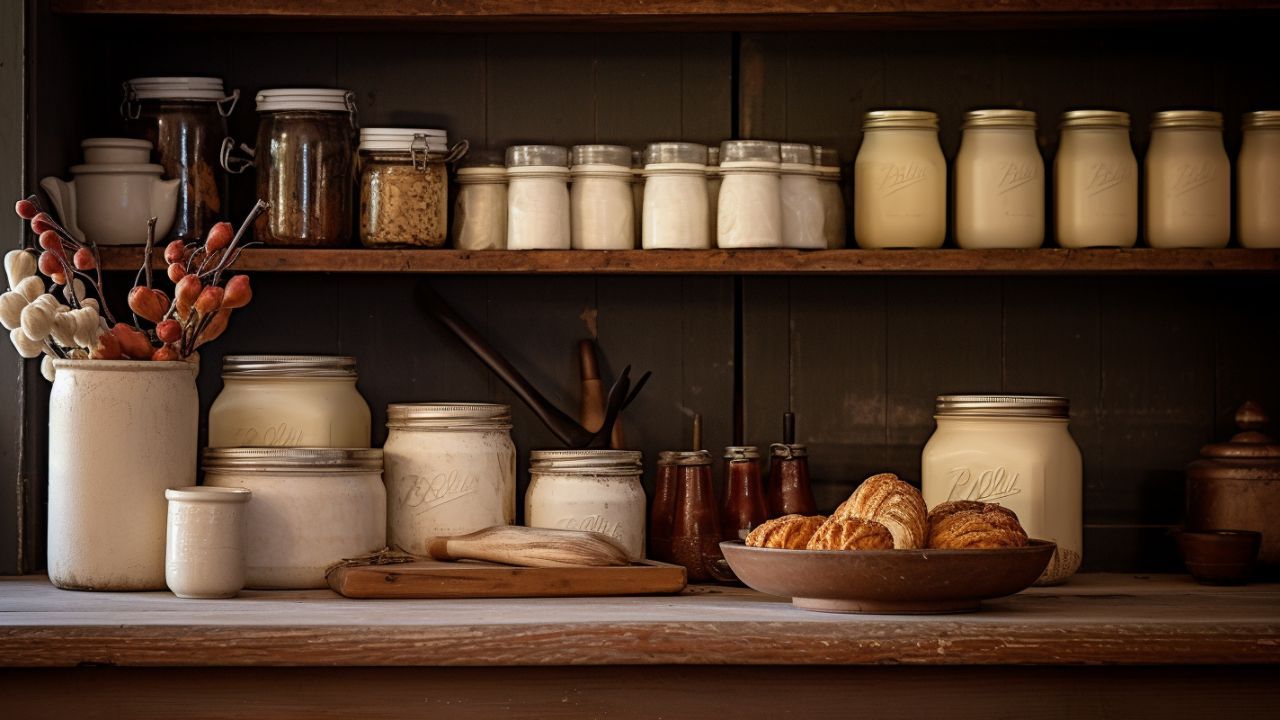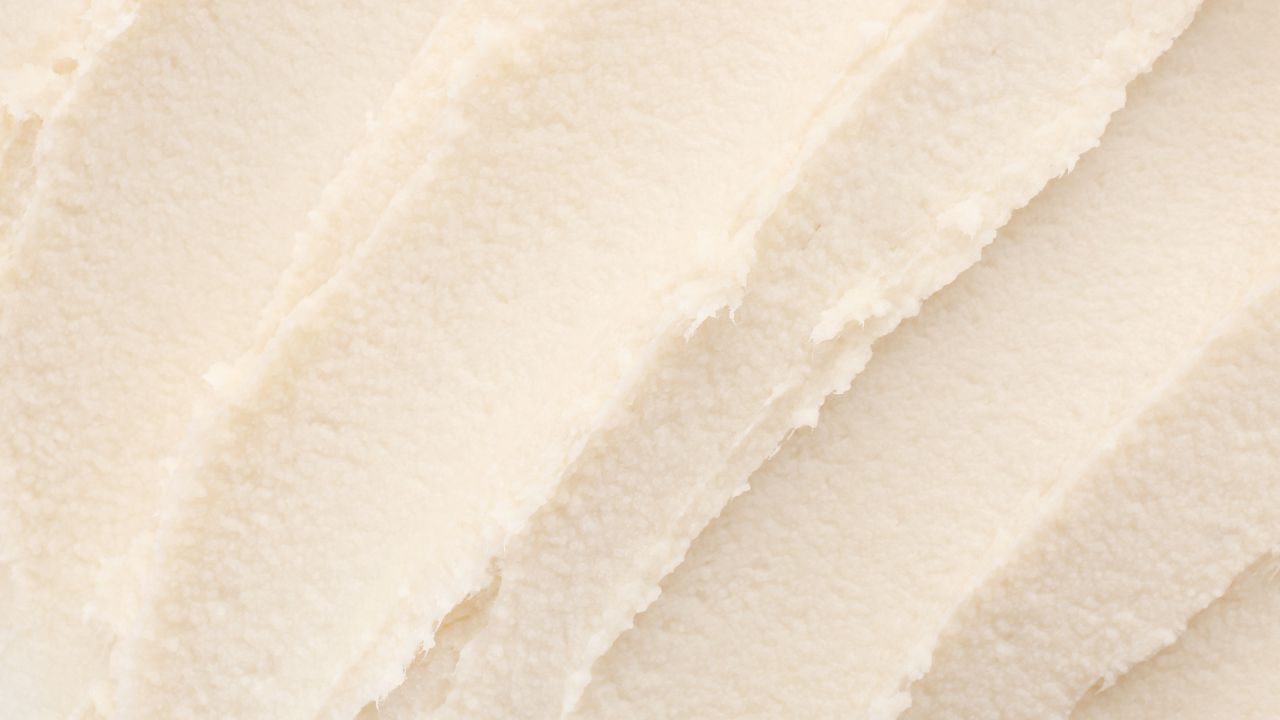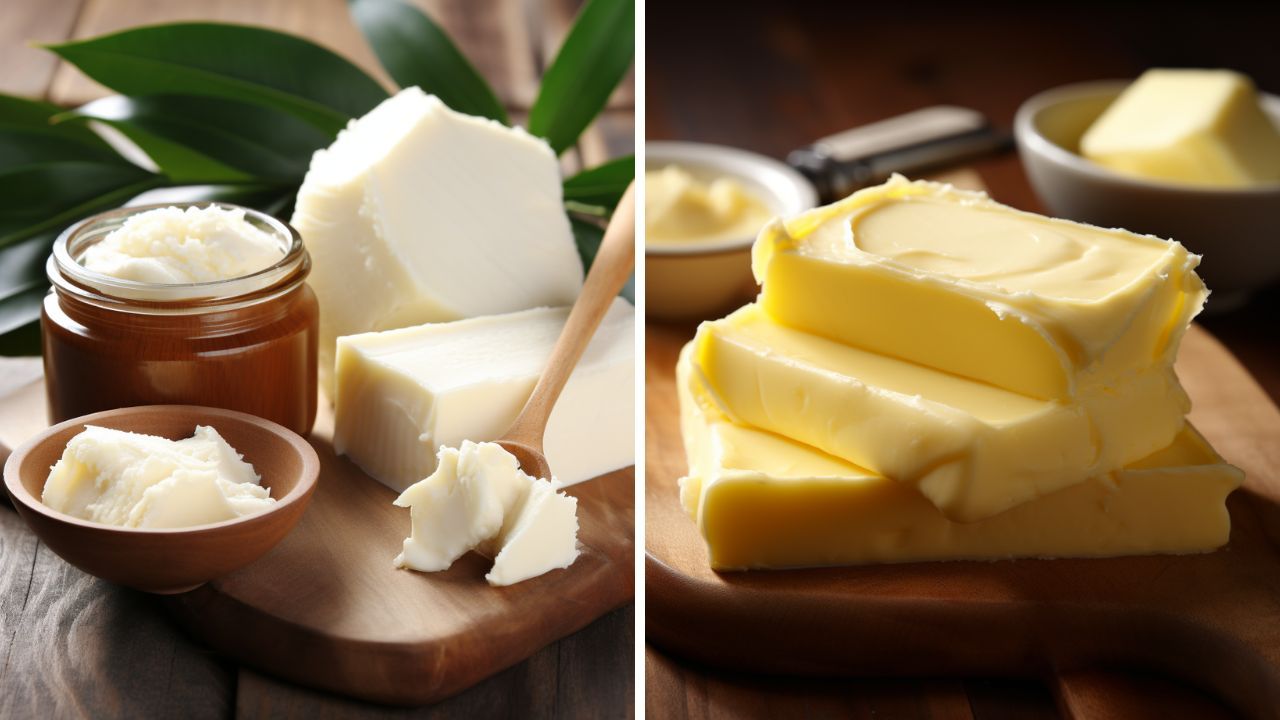
Tallow vs Butter | Unraveling the Fatty Mystery
Explore the ultimate face-off in our 'Tallow vs Butter' article. Learn about their nutritional values, health benefits, and more!
Today, we're diving into the world of fats - specifically, tallow and butter.
Both are common ingredients in our kitchens, but have you ever stopped to consider their differences?
Understanding the specifics of these two popular fats can not only improve your culinary skills but also help you make more informed decisions about your diet.
So let's delve into the sizzling topic of tallow vs. butter.
What is Tallow?
First on our plate is tallow.
But what exactly is it?
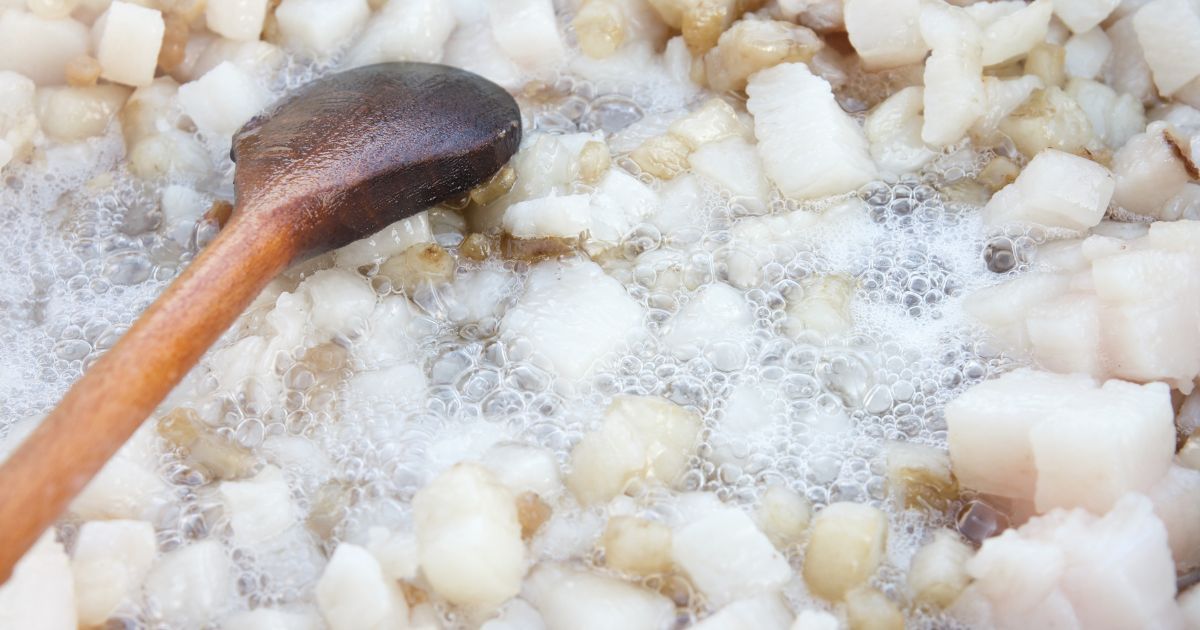
This process removes impurities, resulting in a stable cooking fat that's high in saturated fat and has a long shelf life.
Now, how is tallow used, you ask?
For centuries, tallow (or beef fat) was seen as a flavorful and healthy fat for frying and baking.
It was only when cheap, highly processed vegetable oils became readily available that beef tallow and other animal fat - like lard (pig fat), fell out of favor.

Let it be known that you can still enjoy beef tallow in moderation!
Some people consider it a healthy fat for cooking, especially when compared to margarine or processed shortening.
Plus, grass-fed beef fat is an excellent source of oleic acid, conjugated linoleic acid (CLA), and other healthy fatty acids believed to support healthy cholesterol levels, cognitive health, and a robust metabolism that may lead to fat burning. Isn't that incredible?
Boost your immune health with the power of beef tallow!
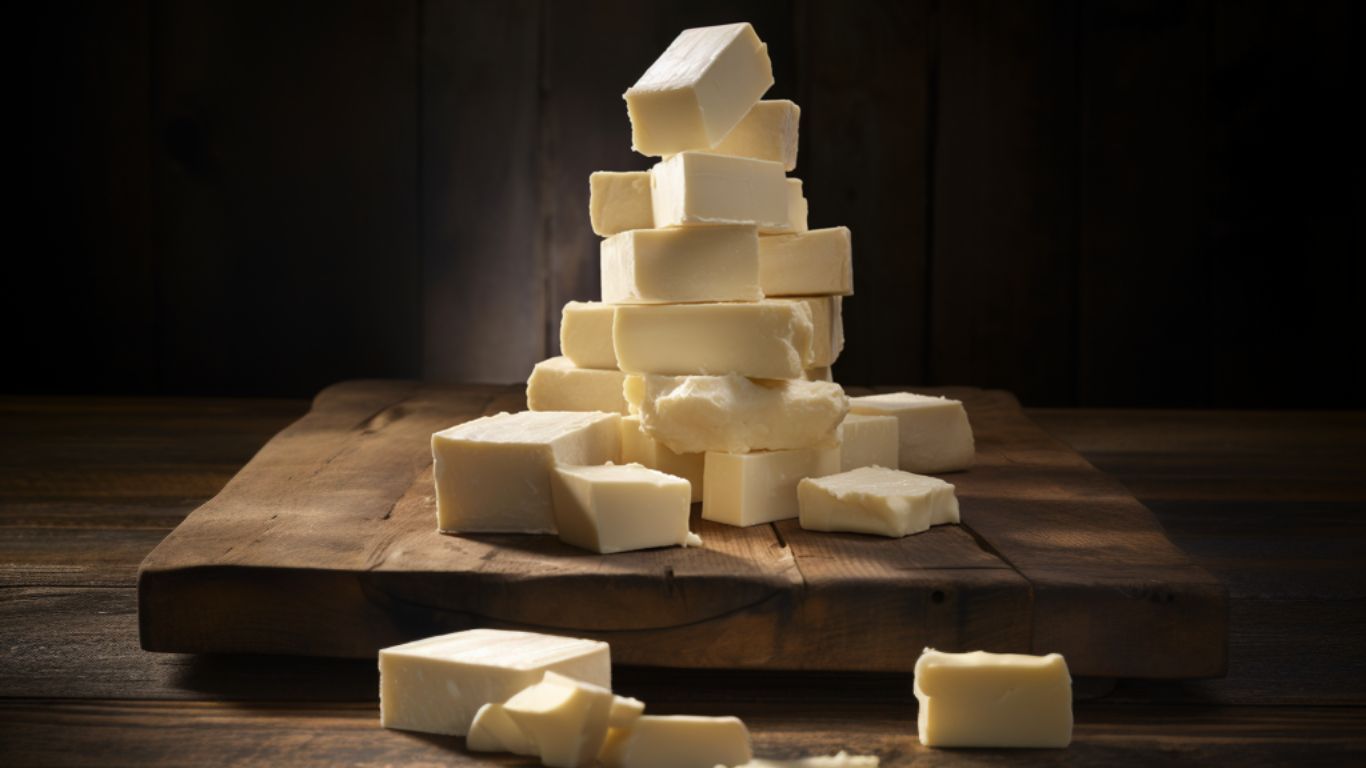
By including unprocessed fats like beef tallow in your diet, you're giving your body a helping hand in absorbing those valuable fat-soluble vitamins that supercharge your immune system.
Beef tallow is a nutrient powerhouse, packed with vitamins A, D, E, K, and B1. It's time to level up your nutrition game!
Tallow also has a wide range of applications.
- Historically, beef tallow was a basic ingredient in candles, soaps, and even skincare products.
- However, in the culinary world, beef tallow is praised for its high smoke point, making it perfect for frying and sautéing.
- It's often used in pie crusts for a rich flavor and flaky texture, and it's the secret behind the delectable taste of traditional fish and chips!
What is Butter?
Next up, let's churn our attention towards butter.

In terms of culinary uses, butter wears many hats. It's a staple in baking, providing moisture, and flavor, and aiding in the leavening process.
On stovetops, it's used for sautéing and creating delicious sauces like the classic béarnaise. And let's not forget, a slice of warm bread wouldn't be the same without a pat of butter melting into it.
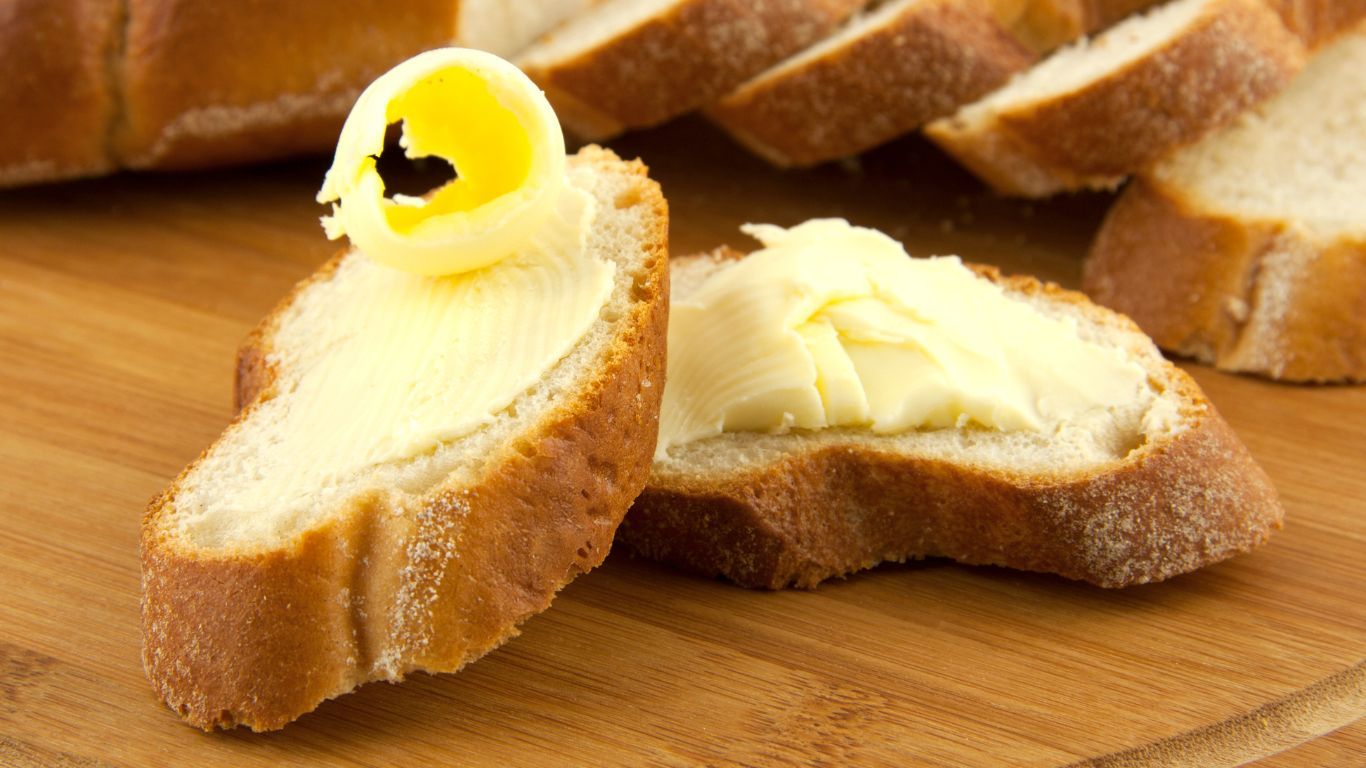
But butter isn't just for cooking and baking. It's also used outside the kitchen.
For example, in certain cultures, butter is used in traditional medicine, and it's even applied to the skin as a natural moisturizer.
Nutritional Value
Let's dive into the nutritional nitty-gritty of beef tallow and butter.
While both are animal fat and thus high in calories, they differ in their composition and nutrient content.
Additionally, beef tallow helps absorb fat-soluble vitamins and provides a good dose of vitamins A, D, E, and K, as well as essential fatty acids (source).
On the other hand, butter is a powerhouse of nutrients. It's loaded with vitamins A, E, and K2. Butter also contains butyric acid, a short-chain fatty acid that can promote gut health (source).
Plus, it provides a small amount of protein and trace minerals, including iodine and selenium.
Remember, though, that moderation is key. Both tallow and butter are calorie-dense, so they should be used judiciously in your diet.
Nutrition Facts Comparison: Tallow vs Butter
| Nutrient | Tallow (1 tablespoon) | Butter (1 tablespoon) |
|---|---|---|
| Calories | 115 | 102 |
| Total Fat (g) | 12.8 | 11.7 |
| Saturated Fat (g) | 6.37 | 6.5 |
| Monounsaturated Fat (g) | 5.35 | 2.4 |
| Polyunsaturated Fat (g) | 0.512 | 0.4 |
| Cholesterol (mg) | 14 | 33.5 |
| Sodium (mg) | 0 | 1.4 unsalted/74.8 salted |
| Vitamin A (IU) | Negligible | 108 |
| Carbohydrates (g) | None | None |
| Fiber (g) | None | None |
| Protein (g) | None | None |
Health Benefits and Risks

Health Benefits of Tallow
Tallow isn't just for frying; it carries some impressive health benefits.
Furthermore, the vitamins present in beef tallow, especially vitamin D, play crucial roles in our body, from bone health to immune function (source).
And let's not forget about the skin benefits - thanks to its moisturizing properties, tallow can help maintain skin health.
Health Risks of Tallow
While tallow has its perks, it's not without potential drawbacks.
The high level of saturated fats may raise concerns for those with heart disease or high cholesterol.
But remember, tallow is still high in calories, so overconsumption could contribute to weight gain and associated health problems.
Health Benefits of Butter
Butter, too, boasts several health benefits. Its vitamin A content supports eye health, while vitamin K2 plays a role in heart and bone health (source).
The butyric acid in butter has been linked to reduced inflammation and improved gut health (source).
Health Risks of Butter
However, like tallow, butter has its share of potential risks. It's high in saturated fats, which have been linked to heart disease.
Some studies suggest that replacing saturated fats with unsaturated fats can reduce heart disease risk (source).
Again, portion control is essential with butter due to its high-calorie content. Balancing it with other healthy fats like olive oil and avocados can help maintain a balanced diet.
So there you have it, a deep dive into the nutritional values, benefits, and risks of tallow and butter. Remember, it's not just about what you eat, but how much you eat. Balance and moderation are key ingredients in the recipe for a healthy diet.
Flavor and Culinary Uses
Alright, let's switch gears and talk about something most of us can't resist - flavor!

When it comes to tallow vs. butter, each brings its unique taste and culinary uses to the table.
- Tallow has a distinct, rich, and slightly meaty flavor that can enhance the taste of dishes, especially those involving meat.
- Its high smoke point makes it a champion for frying and sautéing, keeping your kitchen smoke-free while you whip up some crispy fries or golden-brown sautéed veggies.
- Tallow is also loved in the world of baking, where it lends a flaky texture to pie crusts.

On the other hand, butter offers a creamy, sweet, and slightly nutty flavor that's hard to resist.
- It's versatile, playing a starring role in a range of recipes, from sautéing and roasting to baking.
- Think of the beautiful browning on a butter-basted roast chicken or the irresistible aroma of a fresh batch of butter cookies.
- Butter also emulsifies beautifully, making it perfect for creating smooth, velvety sauces.
Remember, while both are fantastic in their own right, they're not always interchangeable due to their distinct flavors and melting points.
So choose according to the recipe and personal preference.
Culinary Uses Comparison: Tallow vs. Butter
| Culinary Use | Tallow | Butter |
|---|---|---|
| Frying | Yes (High Smoke Point) | Yes (Medium-Low Smoke Point) |
| Baking | Yes (Commonly Used) | Yes (Commonly Used) |
| Sautéing | Yes (High Smoke Point) | Yes (Medium-Low Smoke Point) |
| As a Spread | Less Commonly Used | Commonly Used |
| Smoke Point (°F) | 375-400°F (190-204°C) | 350-375°F (177-190°C) |
Environmental Impact
Now, let's touch on an increasingly important topic - the environmental impact. Both tallow and butter production have their environmental footprints.
However, it's essential to consider the overall impact of livestock farming, which contributes to greenhouse gas emissions and requires significant land and water resources (source).
Butter production, on the other hand, relies on dairy farming.
While it's a significant source of livelihood for many farmers worldwide, dairy farming also contributes to greenhouse gas emissions and can lead to water pollution if not managed properly.
The key here is balance and conscious consumption. Opting for products from sustainable, responsible sources can help minimize your environmental footprint. And as always, moderation is key.
Cost Comparison
Let's talk money. When it comes to the cost of tallow vs butter, several factors come into play.
- Tallow is often cheaper than butter, primarily because it's a by-product of the meat industry. It's made from parts of the animal that might otherwise be discarded, making it a more economical choice.
- Butter, on the other hand, involves a more labor-intensive process, from milking the cows to churning the cream. This, coupled with the fact that it's a primary product of dairy farming, often makes it more expensive than tallow.
Of course, prices can vary based on factors like quality, brand, region, and whether the product is organic or conventionally produced.
So, while tallow may generally be more wallet-friendly, always consider your specific needs and preferences when shopping.
Exploring Alternative Cooking Oils

While beef tallow and butter offer their unique advantages, the world of cooking oil does not end there.
For those seeking alternatives, there are many options each with its own flavor profile, health benefits, and cooking implications.
- Olive Oil: A staple in Mediterranean cuisine, olive oil is renowned for its heart-healthy monounsaturated fats and robust flavor. It's excellent for drizzling over salads, dipping bread, or gently sautéing foods.
- Coconut Oil: With its tropical aroma and higher smoke point, coconut oil is suitable for both baking and frying. It's also rich in medium-chain triglycerides (MCTs) which are renowned for their potential energy-boosting properties.
- Avocado Oil: Like olive oil, avocado oil is high in monounsaturated fats and is versatile in the kitchen due to its higher smoke point. It's ideal for grilling, roasting, and making salad dressings.
Remember, every oil has different characteristics, including its nutritional profile, smoke point, and flavor. It's worthwhile exploring these alternatives and others to find the ones that best suit your dietary needs, culinary preferences, and budget.
Frequently Asked Questions
Let's round off with some frequently asked questions about tallow and butter:
Can I use beef tallow and butter interchangeably in recipes?
While both are fats, they have different flavors and melting points. So, they may not always be interchangeable. Consider the recipe and the flavor you want in your dish before deciding.
Are beef tallow and butter suitable for a vegan diet?
No, both tallow and butter are animal products and thus not suitable for a vegan diet. Plant-based alternatives are available for both.
Which is healthier - beef tallow or butter?
Both have their health benefits and potential risks. It's about how much you consume and balancing them with other healthy fats in your diet.
Final Thoughts
Phew! We've covered a lot of ground in our exploration of tallow and butter. Both are versatile fats with unique flavors, nutritional profiles, and culinary uses.
Tallow offers a rich, meaty flavor and is excellent for high-heat cooking, while butter brings a sweet, creamy taste and shines in baking and sauce-making.
From a health perspective, both have their pros and cons, so moderation is key. And let's not forget the environmental impact - conscious consumption and choosing sustainable sources can help us tread lightly on our planet.
Remember, there's no one-size-fits-all answer here. Whether you reach for tallow, butter, or both depends on your dietary needs, culinary preferences, budget, and values. Happy cooking!
Before You Go...
